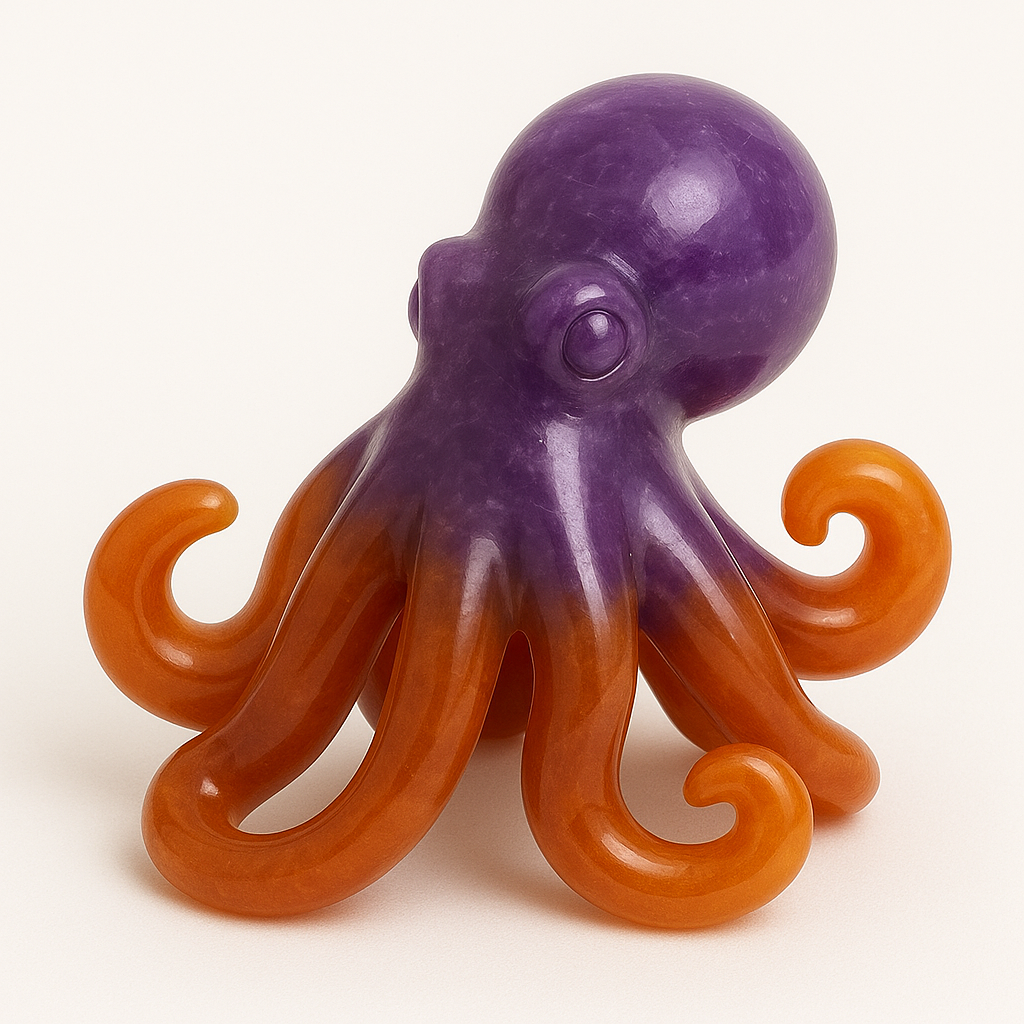
The Symbolism of Octopuses
Share
Beneath the weight of the ocean, in realms where light bends and silence expands, the octopus moves—not with the rigidity of form, but with a fluidity that defies category. It slips through cracks, reshapes itself endlessly, and disappears into its environment as if it were never there. To encounter the octopus is to meet the archetype of adaptability, of distributed intelligence, of fluid mastery over identity and space.
The octopus does not walk a path. It flows between paths, untethered, shifting, and sovereign. It is not bound by one way of seeing, moving, or being—and in this, it becomes a symbol of evolution through transformation, of intelligence beyond form.
The Deep Intelligence in the Mythic Mind
In many traditions, the octopus is seen as both mysterious and ancient, a creature of great power dwelling in unseen depths. In Hawaiian lore, the octopus (heʻe) is said to be a survivor of a previous world, a remnant of a past creation cycle—an echo of an older order.
In certain Indigenous Pacific Island beliefs, the octopus represents the origin of movement and connection, its limbs reaching into all directions of the cosmos, binding the world together through unseen currents. In modern consciousness, it often appears as a symbol of the alien, the unknowable—yet this otherness is not a separation, but a reminder of how vast and flexible consciousness can be.
The octopus is not mythologized as conqueror or judge, but as shapeshifter, escape artist, seer, and silent observer of what lies beneath appearances.
Fluid Body, Fluid Mind
Every part of the octopus is aware. It thinks not from a single point, but through distributed intelligence—its arms sensing, processing, and acting independently yet cohesively. This is not chaos, but a deep integration of mind and environment. Its body is soft, yielding—yet this softness is its power, allowing it to slip through any opening, to bypass resistance entirely.
It camouflages instantly, not from fear, but from mastery of presence. It does not fight when it can disappear, does not confront when it can become invisible. And yet, when needed, it can strike with precision and control.
The octopus teaches the seeker to dissolve identity, to re-form without fear, and to embrace the truth that to be many things is not to be fragmented—but to be complete in flexibility.
Resonance with the Energy Centers
The octopus expresses a primary resonance with the indigo-ray energy center—the third eye chakra, the seat of deep perception, multidimensional awareness, and transformation through insight.
Its intelligence is not linear. It moves through intuition, sensation, and instantaneous adaptation, making choices from within a non-verbal awareness that responds to the whole field of being. This is the essence of indigo-ray function: not deduction, but perception of pattern, inner knowing, and the ability to shape reality without forcing it.
Its capacity to vanish, to mimic, to shift form and texture—these are not tricks, but expressions of mastery over illusion. The octopus does not forget itself when it changes; it becomes more fully itself through change.
There is also a secondary resonance with the orange-ray energy center—the sacral chakra, which governs fluidity, creativity, personal space, and energetic boundaries. The octopus is a sensual being, deeply attuned to its surroundings, able to both embrace and withdraw with ease. It teaches that touch and environment are not separate, that expression is both personal and relational.
Together, these two centers—indigo and orange—form a spiral between high perception and embodied sensitivity, a dynamic balance of knowing and feeling, of insight and adaptation.
The Master of Fluid Identity
The octopus does not declare itself. It reveals itself only when aligned, and even then, only in part. It moves as needed, becomes what is needed, and then slips away again—intact, unseen, and unchanged at its core.
To walk with the octopus is to accept that the self is not a fixed shape, but a living intelligence capable of endless recombination. It is to trust the quiet knowing that comes without language, and to allow one’s life to be shaped not by resistance, but by response.
The octopus reminds the seeker that survival is not strength alone, but clarity in motion, and that mystery is not absence—but the fullness of being beyond form.
It does not fear the unknown.
It comes from it.